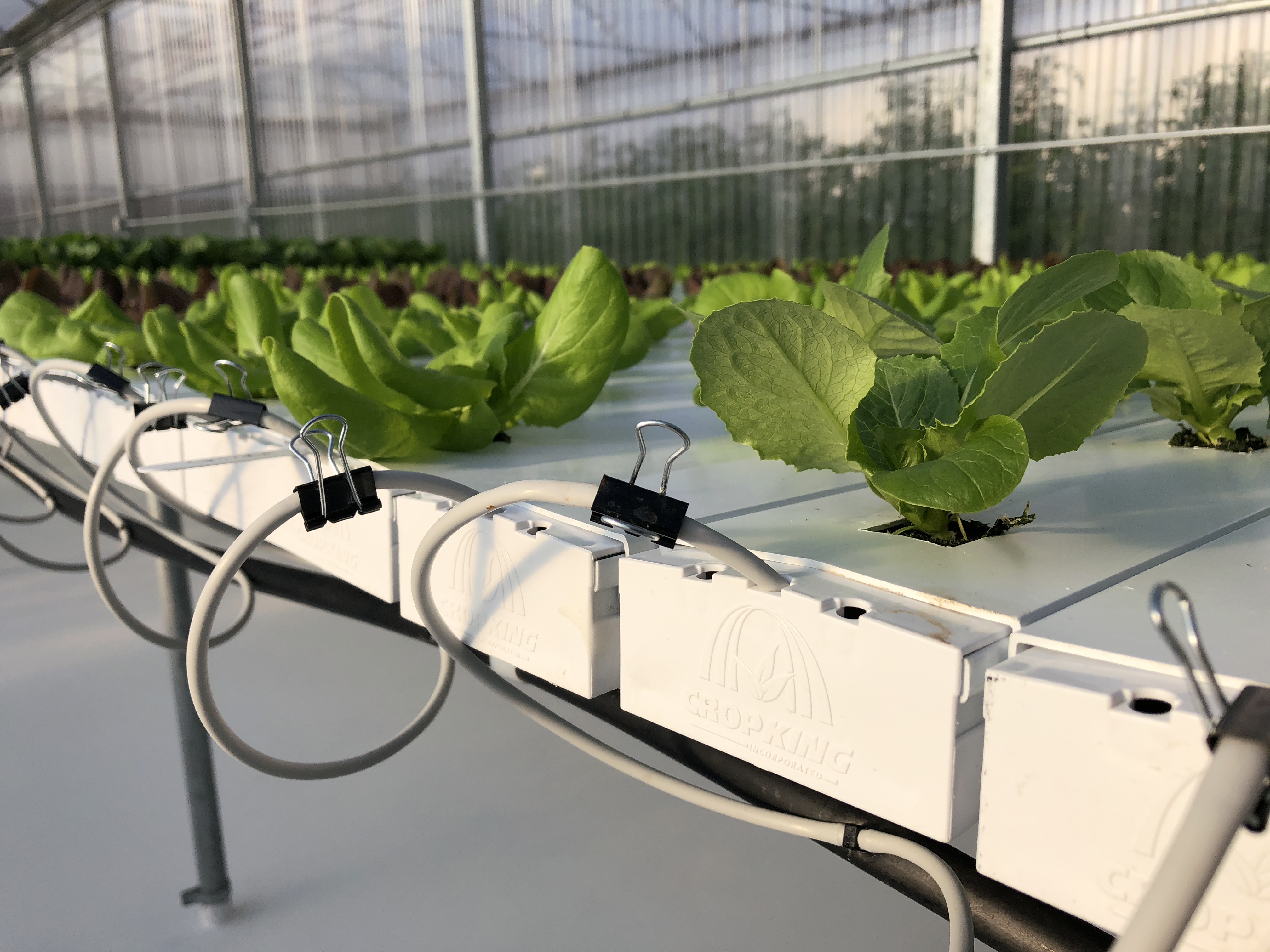Part 2: Rapid Relative Humidity Decreases in the Greenhouse

Previously on the blog we talked about rapid relative humidity increases and how plant tissue is affected. Today, we’re talking about part 2 – rapid relative humidity decreases. If you missed part one, check it out here!
In general terms, a rapid decrease in relative humidity is a sizable drop in a fairly short period of time. For example, a 20% drop in relative humidity over a 20 minute period in the greenhouse would definitely be considered a rapid relative humidity decrease.
The rate of change in the relative humidity is more important compared to the difference between the old relative humidity and the new relative humidity that can bring about plant injury in the greenhouse.
Many factors are involved in determining whether a relative humidity drop in the greenhouse will bring about plant tissue damage. The plant being grown and its stage of growth are two big factors. The growth rate in the plant and the recent history of relative humidity swings may make the plant more, or less, sensitive to damage from a dive in the relative humidity. Generally speaking, the more rapid the rate of growth in the plant, the more sensitive it will be to a dive.
For example: A Bibb lettuce crop in a greenhouse where the relative humidity went from 80% to 60% in 15 to 20 minutes experienced a rapid decrease in relative humidity and may suffer tissue damage.
What happens in the plant when the relative humidity decreases rapidly?
It becomes easier for the plant to transpire water into the air. Water movement from the plant out into the air becomes more rapid and the movement of the water within the plant picks up speed. The movement of water into the plant through the roots may speed up a little but it does not speed up fast enough to avoid the development of a deficiency of water within the tissue in the plant. Because the plant roots are the last to get the message that more water is needed by the plant tissue above, a water shortage is created within the stems, leaves and fruit of the plant.
The shortage of water within the plant tissue occurs as the flow of water into the plant only very slowly increases. The young and still expanding cells at the leaf edges and in the blossom end of the fruit experience a pull on their water content. This pull may not be any greater than that in a mature and calcium fortified cell in the plant but these cells are not fortified with calcium rich walls because they are immature. Water gets pulled out of the immature cells to the extent that sometimes the cells collapse and die.
What to look for
Damage can appear in the leafy crop as dead cells around the edges of lettuce, tomato and cucumber leaves. The damage can appear in the leaf tissue within hours but it is usually evident within a day or two. It often appears on the leaf tips down inside the developing Bibb or leafy lettuce. On the fruit of fruiting crops like tomatoes and peppers, fruit cell death shows up 10 to 14 days after the actual cell death as Blossom End Rot on tomato and pepper fruit.
Factors contributing to rapid relative humidity decreases in the greenhouse:
- A rapid rise in greenhouse temperature
- Sunrise
- The sun suddenly being exposed from behind a cloud
- A warm front coming through the area
- Not enough water being added to the air coming into the greenhouse through the wet wall
Plant health is an important topic to be knowledgeable about, helping to ensure your success by knowing what to look for, what to avoid and how to troubleshoot. Our horticulturists and technicians can help to identify and offer possible solutions if you find yourself up against something you’re unsure of. In the meantime, you can always find more helpful tips and articles on our blog!
humidity Greenhouse temperature